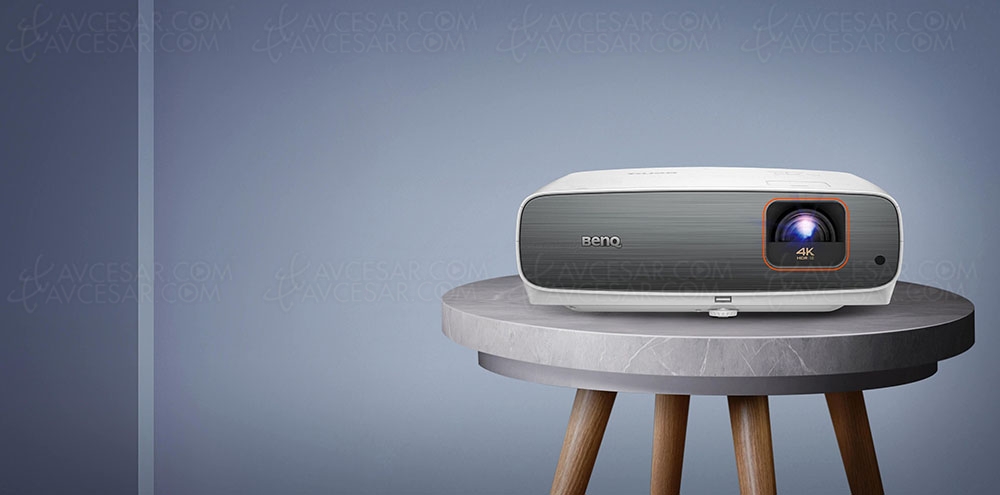In short, the BenQ TK860 takes up many of the specifications of the TK850 that appeared in 2020. First observation, it retains exactly the same modulo case, some cosmetic changes, a gray (and no longer blue) front and a red strapping around the lens hatch, the most beautiful effect.
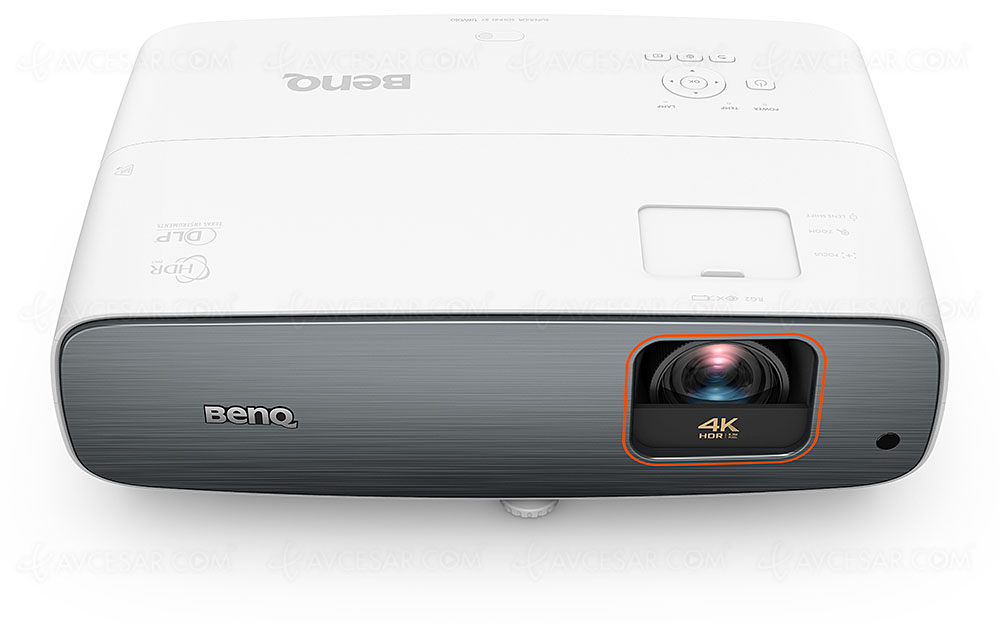
BenQ TK860, main specifications
For the rest, the BenQ TK860 is still an HD Ready 2 160p and 3D Ready model based, as already mentioned, on the 0.47'' (1.19 cm) DMD chip with Full HD resolution (actually a 2048 x 1200 pixel array of which only 1920 x 1080 pixels are used). There is also a four-segment encoder wheel (RGBW) with white in addition to red, green and blue, with the aim of optimizing the rendering of HDR signals and the associated brightness (see below). There is also a specific Sport mode intended to enhance colors and provide a natural skin tone, with 98% coverage of the Rec.709 gamut. Finally, gray scale calibration is now possible on 11 points.

And, of course, we notice a motion compensation system MEMC (Motion Estimation/Motion Compensation) to perfect the fluidity of action scenes with a multitude of moving objects on the screen, or for the display of sports (typically to avoid the display of several footballs during a goal clearance, for example). If activating Sport mode automatically triggers the MEMC process, the BenQ TK860 also influences color rendering and sound processing.
Another major evolution of the BenQ TK860, a new video processor from the TV universe, the Quad Core MediaTek MT9669 model. The latter offers, among other things, the Local Contrast Enhancer function to improve image quality through segmentation and analysis of more than 1,000 zones. Each of them benefits from a specific luminosity and gamma curve.
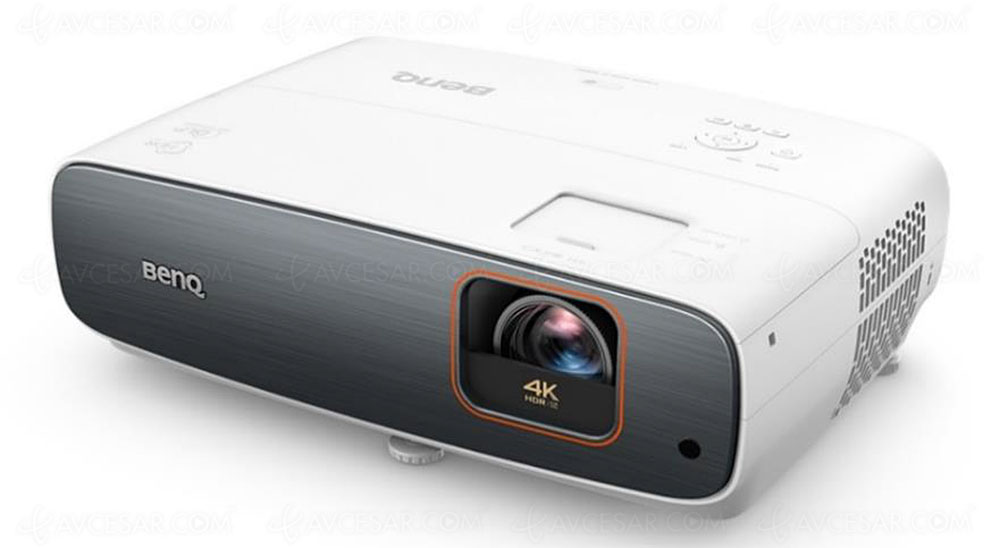
BenQ TK860, XPR processing to display 8 million pixels
The hyper-high switching speed of the mirrors (7 microseconds) is put to use via a specific video processing called XPR (exclusive to Texas Instruments) in order to "switch" each micromirror in three other positions to ultimately create four pixels for the same image displayed. Thus, the initial number of pixels is quadrupled to "create" 8 million pixels, the number necessary for an Ultra HD resolution.
To finish with the subject of Ultra HD / 4K technology, know that the BenQ TK860 is HDR10 and HDR HLG compatible. And via the HDR-Pro function, it is even able to optimize the information of a BT.2020 signal through an exclusive BenQ Tone Mapping to offer a magnified HDR rendering on a projection screen.
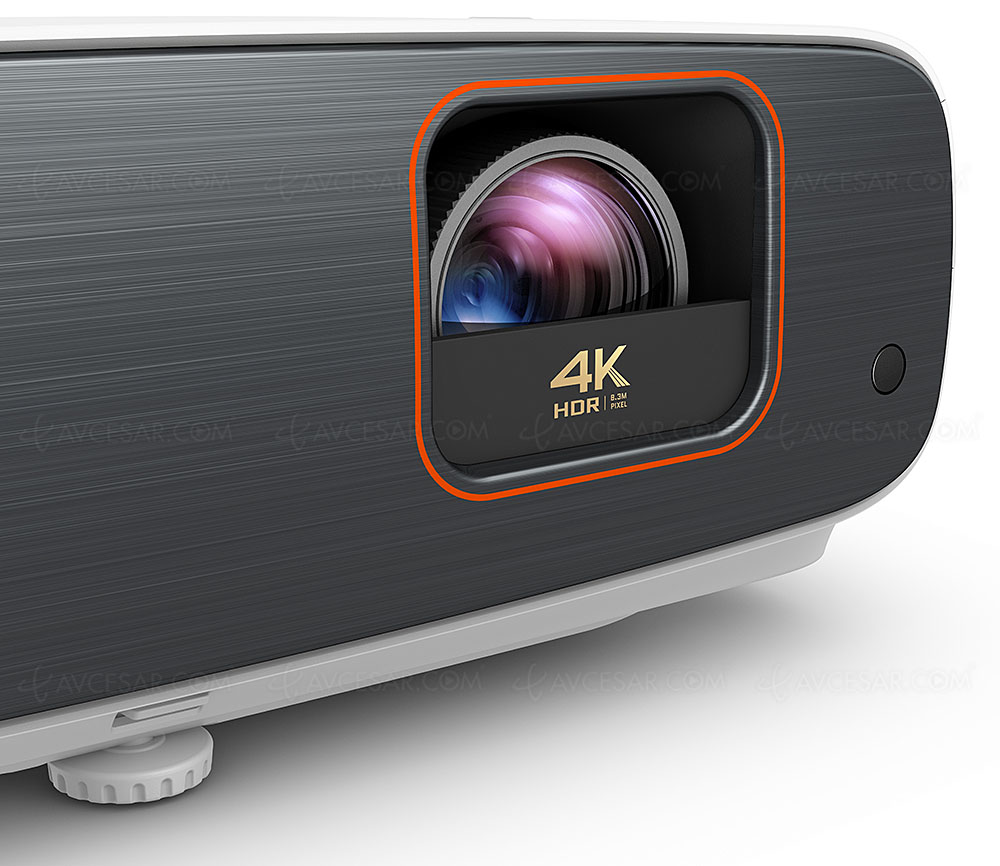
BenQ TK860 specifications, the sequel
For the rest, the BenQ TK860 has a brightness of 3,300 lumens and a contrast ratio of 50,000:1. Still on the menu, in addition to a relatively short focal length already mentioned (diagonal of 100'', i.e. 2.54 m, i.e. at a distance of 2.5 m and maximum diagonal of the image of 300''), it is necessary also quote a 1.3x zoom. Finally, there is a 30° vertical keystone correction and an adjustable manual focus via a ring to be rotated above the lens (also useful for zooming).
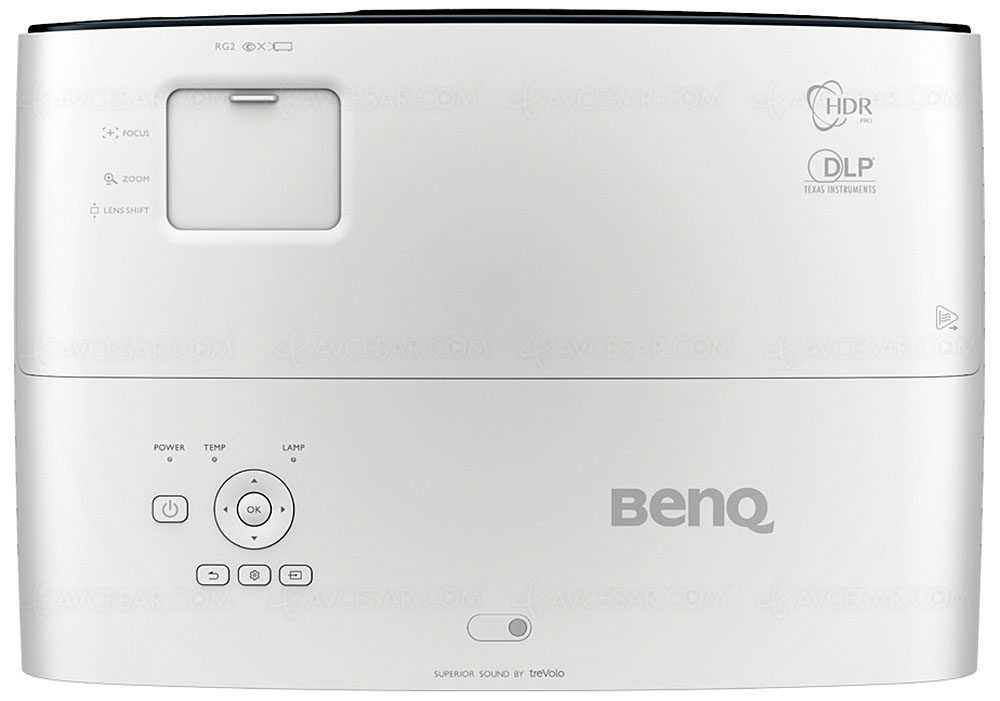
BenQ TK860, 3D and Acoustic Pack
Of course, the BenQ TK860 is also 3D DLP Link compatible. There is an operating noise oscillating between 28 dB and 30 dB, respectively in Eco and Normal mode. Precision, the integrated audio system delivers a power of 2 x 5 watts.
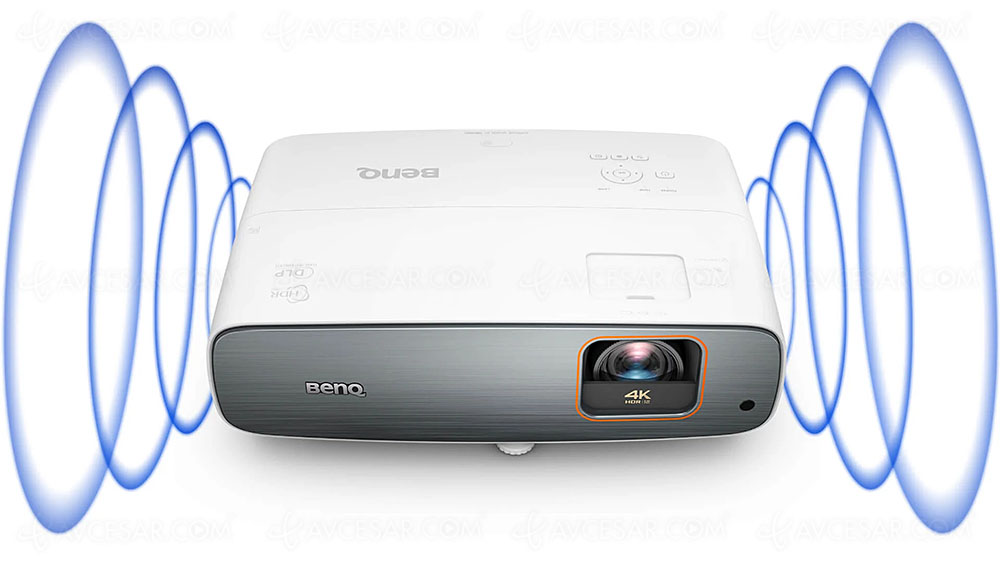
Connection
The connection has three HDCP 2.2 certified HDMI 2.0b inputs, one of which has the eARC function and another compatible with 4K/120 signals (but 4K/60 display), a 3.5 mm mini-Jack output, a optical port, an RS-232 port, a 12V trigger, two powered USB-A ports including one 3.0 and a mini-USB type B port (reserved for maintenance). The 240W lamp has a lifespan of 4,000 hours in Normal mode, 10,000 hours in Eco mode and 15,000 hours in Eco mode.
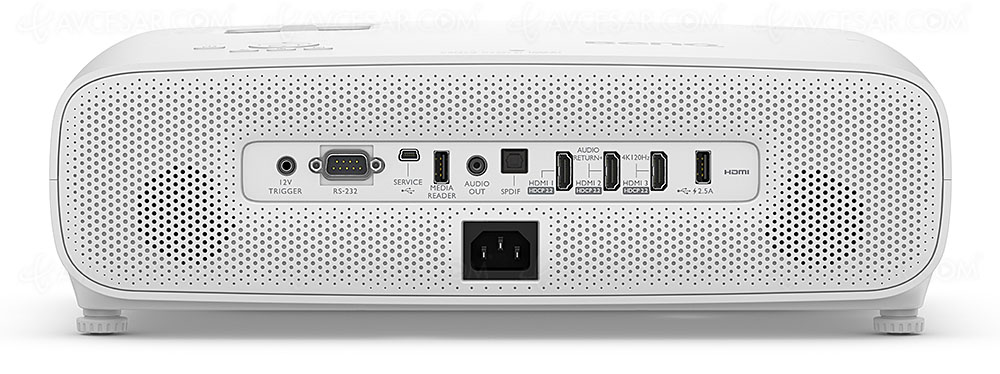
BenQ TK860, Input Lag
Last point, on the Input Lag side, the BenQ TK860 displays 17.9 ms with a 2160p@60 Hz signal, 8.7 ms in 1080p@240 Hz and 21 ms in 1080p@120 Hz. Interesting characteristics for gaming video from a PS5, Xbox Series X console or a PC equipped with a high-performance graphics card (as a reminder, 4K/120 signal compatibility).Available immediately. Indicative price: 1,699 euros.
Reminder of the key characteristics of the BenQ TK860:
• Mono-DLP type
• Ultra HD resolution
• Native resolution: 2,048 x 1,200 pixels
• DMD chip : TI 0.47''
• Encoder wheel: RGBW
• Contrast: 50,000:1
• Light source: UHP lamp
• Brightness: 3,300 lumens
• CinematicColor functions• Cinemamaster Video+ functions
• Cinemamaster Audio+2 functions
• Local Contrast Enhancer functions
• HDR10 compatibility
• 3D Ready (BD 3D and DLP Link)
• HDR HLG compatibility
• HDCP 2.2 compatibility
• HDR10+ compatibility
• Gamut: 98% Rec.709
• Sound section: 2.0
• Power: 2 x 5 W
• 3D compatibility: yes
• Connections: 3 HDMI 2.0b inputs, 1 optical output, 1 3.5 mm mini-jack output, 1 RS-232 socket, 1 12V trigger, 2 USB ports, one of which is powered and 1 mini-USB type B port (service)
• Zoom: 1.3x
• Sound level: 28 dB in Eco mode, 30 dB in Normal mode
• Lamp life: 10,000 hours in Eco mode and 4,000 hours in Normal mode
• Vertical keystone correction: + or -30°
• Other: Vertical Lens Shift of 10 %
• Weight: 4.2 kg
• Consumption: 350 W in Max mode, 340 W in Normal mode
• Dimensions (W x H x D): 380 x 127 x 263 mm
